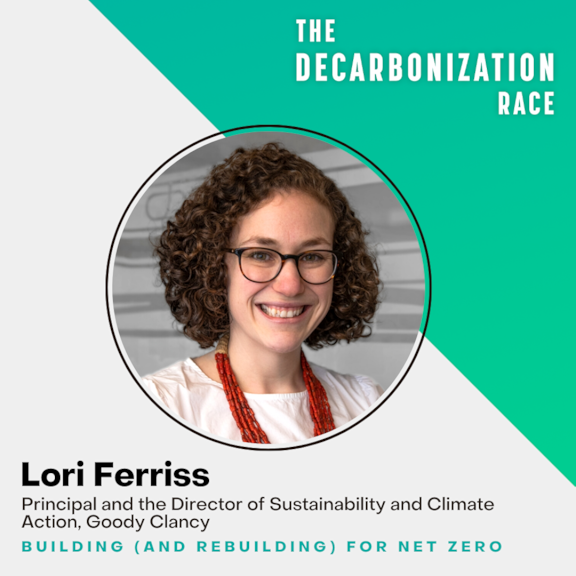Nov 13 2023
Decarbonizing Flight: Growing the Sustainable Aviation Fuel Market with Kim Carnahan
Most people think of jet fuel the same way they think of filling up their car with gasoline: go to the pump, fill the tank, pay the price per gallon. But decarbonizing business travel and air freight is a much more complex task, where sellers, buyers and users are all part of the transaction, and standards for what makes aviation fuel “sustainable” are still being set. On this episode of The Decarbonization Race, new co-host Steven Goldman takes flight into the world of Sustainable Aviation Fuel or SAF – including the market currently being built for it, the range of ways SAF is being produced, and what structures need to be in place to make sure SAF is not only affordable but provably more sustainable than conventional fuels. He's joined by Kim Carnahan, founder and CEO of Neoteric Energy & Climate. Kim co-founded the Sustainable Aviation Buyers Alliance (SABA), an industry body bringing together a range of NGOs, airlines and other companies investing in SAF supply and technologies. How does she know so much about the intricacies of decarbonizing international sectors like aviation and shipping? Because while working at the State Department, she served as the United States’ Chief Negotiator on Climate Change. Kim played a central role in the negotiation of the Paris Agreement and its implementing guidance. Kim also led the U.S. team that negotiated the Carbon Offsetting and Reduction Scheme for International Aviation (CORSIA) – a parallel agreement to Paris governing the international aviation sector – and its implementing guidance. In a fast-paced and wide-ranging interview, Kim discusses the different approaches jurisdictions are taking when it comes to sustainable aviation fuel (SAF) certification and highlights the need for clear guidance from the Greenhouse Gas Protocol and Science Based Targets Initiative. SABA is not only helping create certification standards for SAF, but is working with airlines, suppliers and buyers (who often aren’t the airlines themselves) to build the marketplace, create a book-and-claim system similar to Renewable Energy Certificates to track supply and usage, and advance policies to keep SAF moving down the cost curve. Key Takeaways: The aviation industry contributes more than 2% of global energy-related emissions. Today, commercial aviation is fueled primarily by kerosene-based fuel Jet-A/Jet-A1, which can be easily substituted with SAF blends. SAF is a liquid “drop-in” fuel currently used in commercial aviation which reduces CO2 emissions, which can be produced from several feedstocks, including but not limited to waste oil and fats, municipal waste, non-food crops, CO2 and water. SAF meets all the same technical and safety requirements as fossil-based jet fuel and can therefore be used safely on existing aircraft and within current airport systems. SABA is managed by Environmental Defense Fund and Rocky Mountain Institute with guidance by Neoteric Energy & Climate, but was founded by a diverse set of companies working to tackle the decarbonization of aviation – Bank of America, Boeing, Boston Consulting Group, Deloitte, JPMorgan Chase, McKinsey & Company, Meta, Microsoft, Netflix and Salesforce. Air carriers involved in the initiative include Alaska Airlines, Amazon Air, JetBlue, United Airlines and UPS. Standardization and certification is critical to growing the sustainable aviation fuel market. The certification guidelines developed by SABA are crucial to prevent negative impacts on the environment and society, particularly when dealing with biomass, organic waste and crop-based fuels. Saba's focus on certification helps companies navigate the market, understand what different sourcing criteria should be, and gain assurance that the fuel they are purchasing is sustainable. Resources: Sustainable Aviation Buyers Alliance website SABA’s Sustainable Aviation Fuel 101 Guide Recent announcement of Minnesota creating a SAF Hub, in partnership with Bank of America, Ecolab, Delta Air Lines and Xcel Energy. Boeing’s SAF Dashboard


















